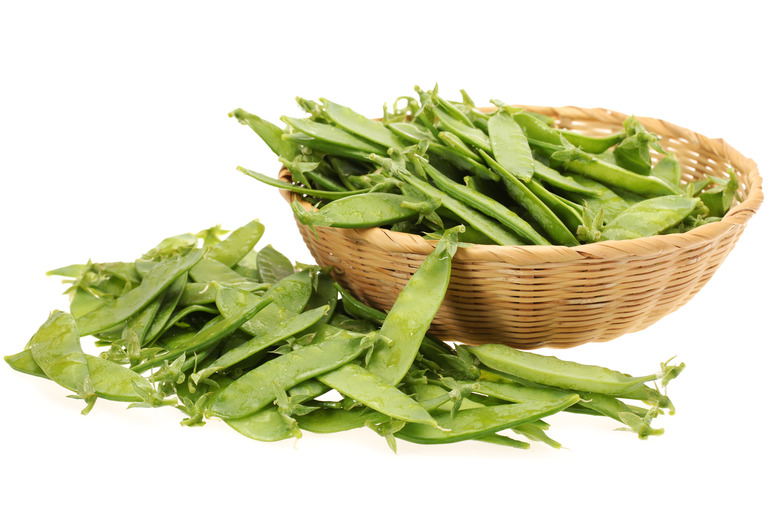What Is The Difference Between Snow Peas & Snap Peas?
If you enjoy growing vegetables, then don't overlook snow peas (Pisum sativum var. saccharatum) and snap peas (Pisum sativum var. macrocarpon). These peas don't produce ordinary, round, green peas you'll find in cans at the grocery store. Instead, they both offer special kinds of peas with edible pea pods that have a crunchy texture and slightly sweet flavor, with snap peas being a bit sweeter. Snow peas and snap peas share many similarities, but each has a unique and clearly distinguishable pod. These varieties are also harvested at different maturity levels. Both plants grow as annuals in all U.S. Department of Agriculture plant hardiness zones.
Dissimilar Pods
Dissimilar Pods
Although snow peas and snap peas both have edible pea pods, their pods are very different. The snow pea pod is especially large, up to 5 inches long. It is broad, flat and very thin. Snow pea pods are also translucent, allowing you to see light through them. These peas taste best when picked young, before the peas inside them produce visible bulges along the back of the pod. The flatter the pod the better. Snap peas, in contrast, produce narrow, oval-shaped pods. These pods are thick, fleshy and opaque. You can't see the peas inside snap pea pods because the pod itself is so thick. Despite this fleshy cocoon, snap peas remain quite crisp and produce an audible snap when broken in half. This is how the plant got its name. The best time to pick snap peas is when the pods are full size and filled with young but well-developed peas.
Growth Supports
Growth Supports
Like all pea varieties, snap and snow pea plants grow as trailing vines that have tendrils capable of attaching to a support. Some snow pea varieties have shorter vines than those of snap peas and can grow well without any support. For example, the snow pea cultivar Oregon Sugar Pod II has vines that are only about 28 inches long or tall, while the cultivar Snowbird has even shorter vines, about 18 inches. Snap pea vines, however, are tall and almost always require the support of a fence or trellis. If necessary, you can make your own simple support by stringing stiff wire between two stakes in the ground.
Climate
Climate
Both snow and snap peas are cool-season crops, thriving during cool spring or fall weather. Plant either type early in spring, as soon as the soil becomes workable, or in early fall while time remains for a crop before winter arrives. Both plants are frost-hardy, able to survive the first few light frosts until they succumb to the first hard frost or freeze. Snap peas also resist a short hot spell well, growing a bit faster in warm temperatures but still producing a sweet, crunchy crop. Because snow peas need picking before the peas grow inside the pods, however, they're a bit more sensitive than snap peas to heat. If a heat wave lasts more than one or two days, your peas may mature a bit too rapidly. If they do, the peas may be a bit tougher than normal but will still have a pleasant taste.
Soil and Water
Soil and Water
Snow and snap peas both grow in any type of garden soil, provided it is well-draining. They need even moisture to set a good crop and do best with about 1 inch of water weekly, including rain. Provide supplemental water during dry spells, but avoid overhead watering to lower the risk of fungal diseases. Instead, use a soaker hose or drip-irrigation system. Adding a 3-inch-thick layer of organic mulch, such as straw or shredded bark, helps conserve soil moisture and keeps down weeds that compete with the pear for moisture and soil nutrients. Don't allow the mulch to touch the plant stems.
